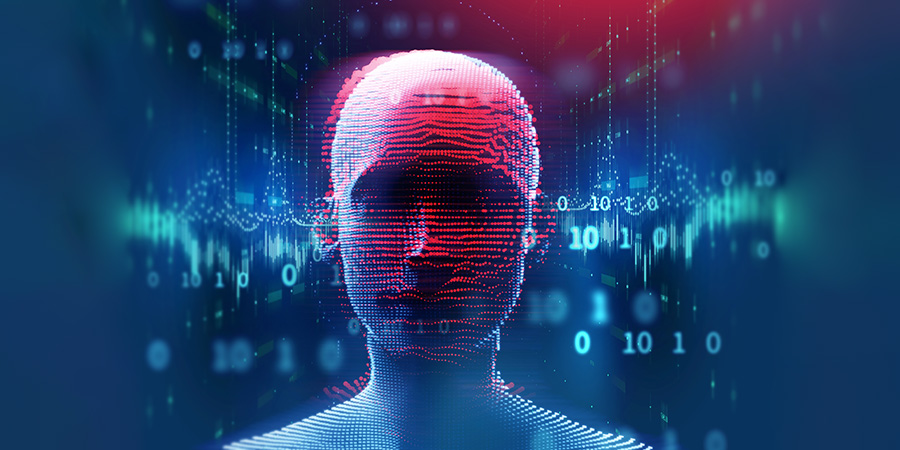Since the introduction of the internet, algorithms have long been a part of our daily lives. Algorithms permeate various aspects of our everyday activities, spanning from internet searches, entertainment platforms, and social media to self-driving cars, visual recognition systems, translation tools, and smart assistants/speakers. These algorithms play a pivotal role in numerous economic sectors, shaping countless decisions made by humans on a daily basis.
Although they are just mathematical equations, their objectivity is compared to that of humans as, ultimately, they are created by humans. This is where the phenomenon of algorithmic bias begins to emerge.
Also Read: Artificial Intelligence: How to Leverage the Opportunities and Avoid the Pitfalls
For instance, some cameras equipped with blink detection features wouldn’t take pictures of many Asians because the “software thought their eyes were never open.” Furthermore, AI-powered voice assistant services face challenges in accurately understanding variations in native accents, and translation tools often associate specific jobs with particular genders when translating sentences containing gender-neutral pronouns from languages such as Turkish, Finnish, and Chinese.
Additionally, cases such as Google's photo-recognition tool mistakenly tagging a picture of two black individuals as gorillas and crime-predicting algorithms inaccurately labeling black individuals as habitual offenders more often than white individuals serve as illustrations of the social biases inherent in algorithms.
Treading on Thin Ice
Algorithmic bias is inherent in the functioning of artificial intelligence (AI) algorithms, which utilize machine and deep learning technology to enable computers to make decisions based on data provided by humans.
While AI developers suggest that algorithmic procedures can simplify activities such as recruitment and mitigate bias, studies have shown that algorithms cannot eliminate discrimination if the underlying data is unfair. This creates the potential for pervasive inequality, spanning biases in online recruitment tools, word associations, online advertisements, criminal justice, finance, and beyond.
Amidst the ongoing dialogue on algorithmic fairness, the societal repercussions of biased AI systems are vast and multifaceted, with harmful impacts that extend to individual rights and social cohesion. Biased AI, resulting from flawed algorithm design or data collection processes can lead to discriminatory decision-making where individuals are adversely affected based on their gender, race, sexual orientation, and other attributes.
For instance, the collected data may not be fully representative of the population they are meant to model. Consequently, this leads to systematic disparities. This type of bias is often perpetuated when data is interpreted in a way that reinforces the interpreter’s preconceived notions, resulting in the proliferation of existing prejudices.
These biases can spill over to various sectors such as employment, finance, and law enforcement, perpetuating existing stereotypes and unintentionally reinforcing social biases, resulting in flawed decision-making. For example, in fraud detection, biased AI can associate first names from other cultures with fraudulent accounts. Furthermore, recruiting tools may disregard some segments of the population for certain jobs, etc.
Fundamental Challenge
According to experts, “unbiased algorithms” rely on the mathematical formulation of fairness and causality, meaning the concept of causality, which is pivotal for fair decision-making, must be translated into precise mathematical language that information systems (IS) can utilize. This has, so far, been an uphill battle for both researchers and practitioners.
Additionally, legal and ethical frameworks are critical for eliminating bias in AI systems through a multi-faceted approach that can be complex and expansive. However, such frameworks have emerged as necessary tools to both recognize and address the ethical and social dimensions of bias, discrimination, and fairness, according to industry experts.
To mitigate this issue, experts recommend the implementation of technical measures, such as unbiased dataset frameworks and improved algorithmic transparency, as well as management measures like internal, corporate ethical governance and external oversight.
International legal bodies and organizations are essential in fostering a unified global strategy to address algorithmic bias. The ICT industry is eagerly anticipating the United Nations' Global Digital Compact findings on artificial intelligence, particularly its perspective on algorithmic discrimination, which is expected to be unveiled in September of this year.
How Can ICT Help to Fight Algorithm Biases?
The ITU recognizes that AI can generate poor or inappropriate purposes or unintended outcomes due to poorly labeled data. It recommends the standardization of data sets as well as training courses on the ethical applications of AI. It is crucial to implement rigorous data quality control processes, including the renewal of data sets to ensure the accuracy of statistical patterns and relationships, and to conduct regular verification and audits of the AI process, which can serve as safeguards against the perpetuation of societal biases.
As AI technology expands its reach across various industries, promising enhancements in efficiency, scalability, speed, and precision, the ICT sector emerges as a significant beneficiary of these advancements. It bears the responsibility to diligently identify and address biases within its AI-powered applications, adopting a strategy of "algorithmic hygiene."
Also Read: Artificial Intelligence in 2024: A Win-Win Situation
Embracing innovative methodologies over conventional associative or causal inference techniques is imperative, ensuring a comprehensive adoption across all fronts. This approach emphasizes equitable exposure through meticulous data collection and management mechanisms, fostering fair and just outcomes.
In conclusion, by 2050, two-thirds of the world’s population will be living in urban areas, which places a renewed focus on urban living to ensure that the cities of the future are secure, sustainable and inclusive. Hence, a seamless integration of human connections and technological innovation is crucial for the functioning of a modern digital economy. Unbiased algorithms must, thus, be incorporated as an irreplaceable component of this digital evolution.
Interesting Read: The Ethics of Technology: Balancing Innovation and Responsibility










